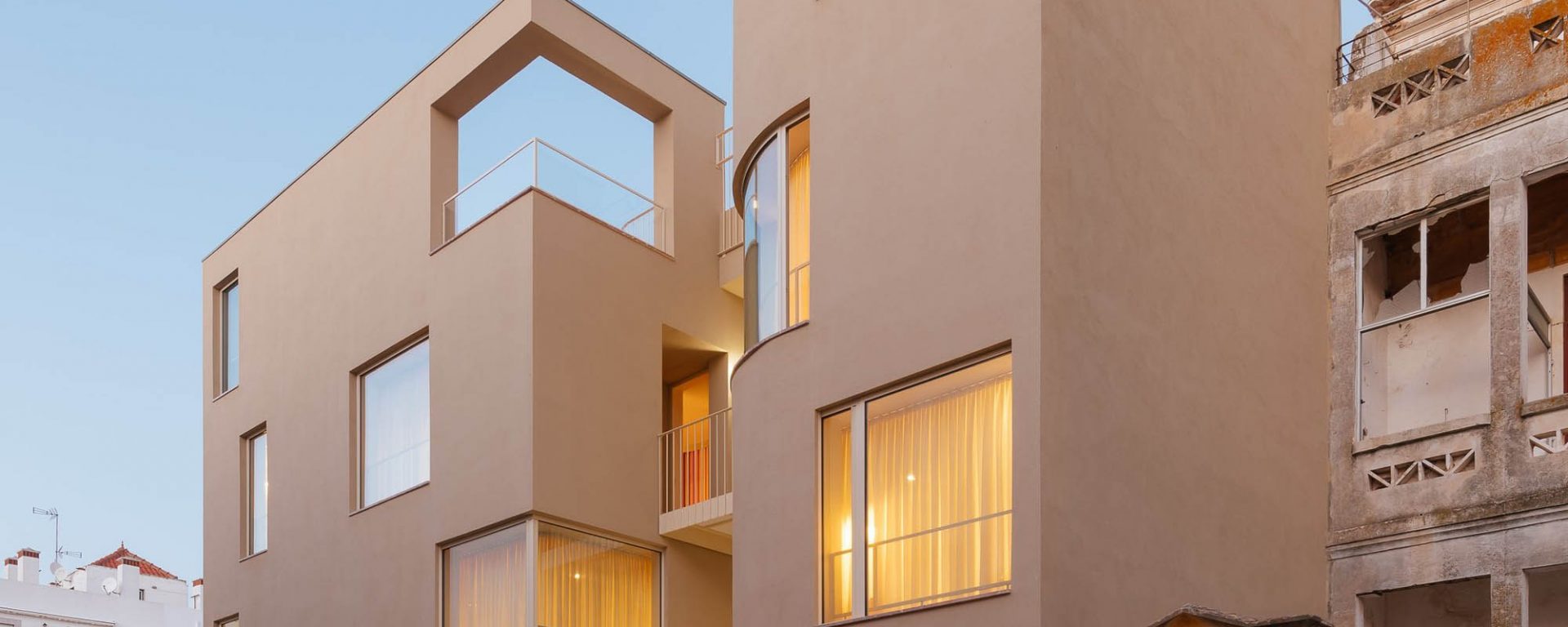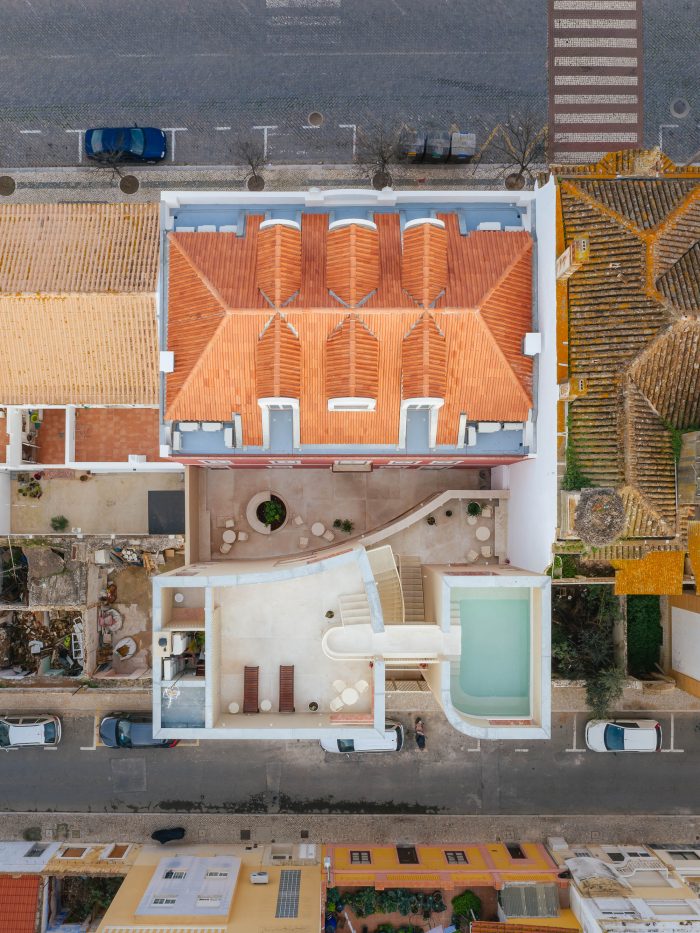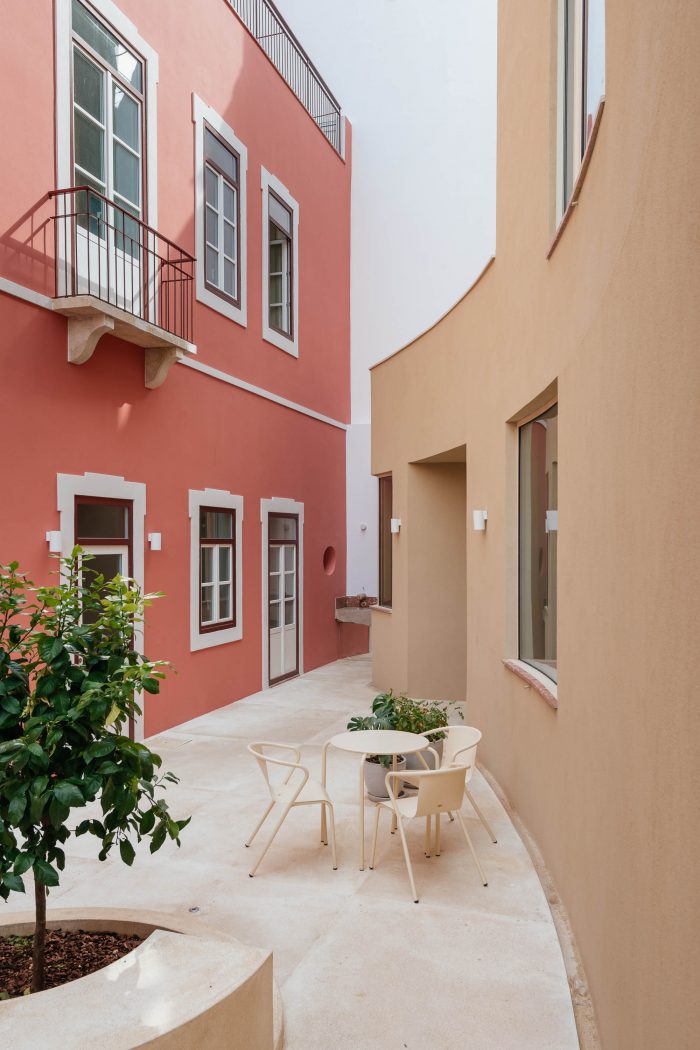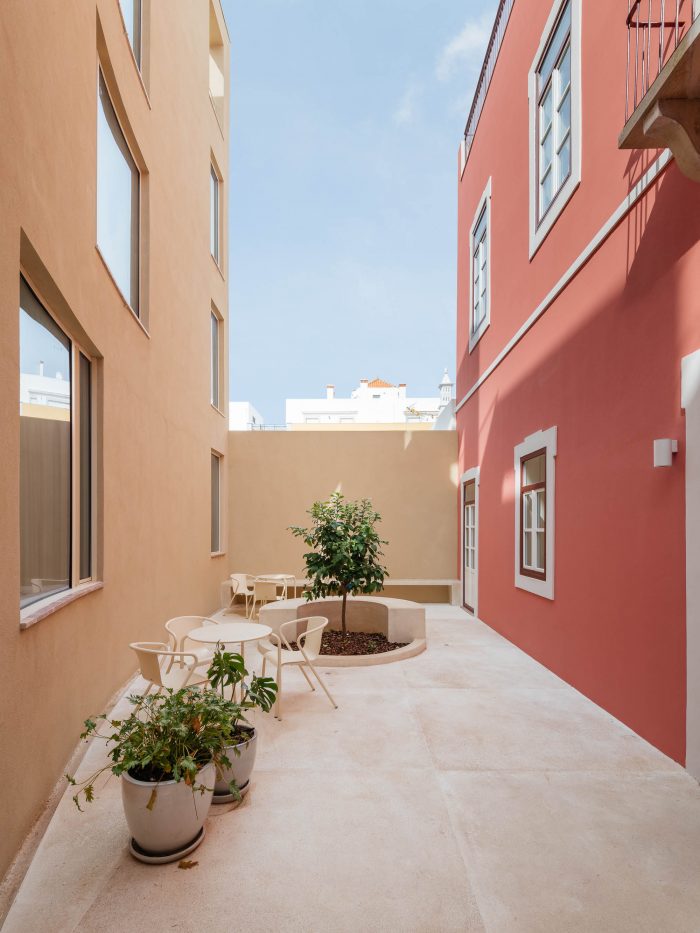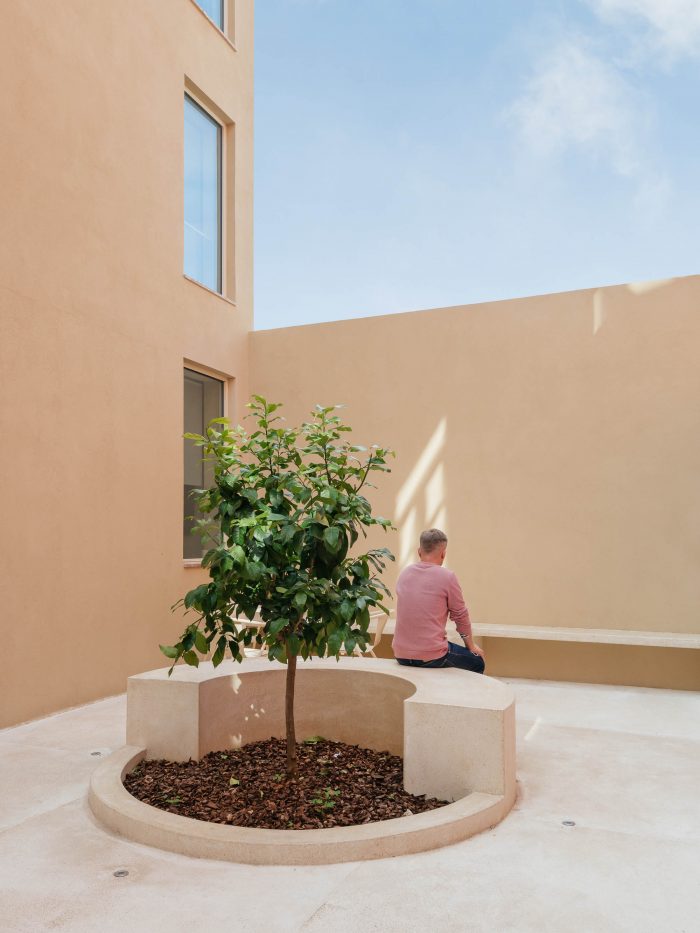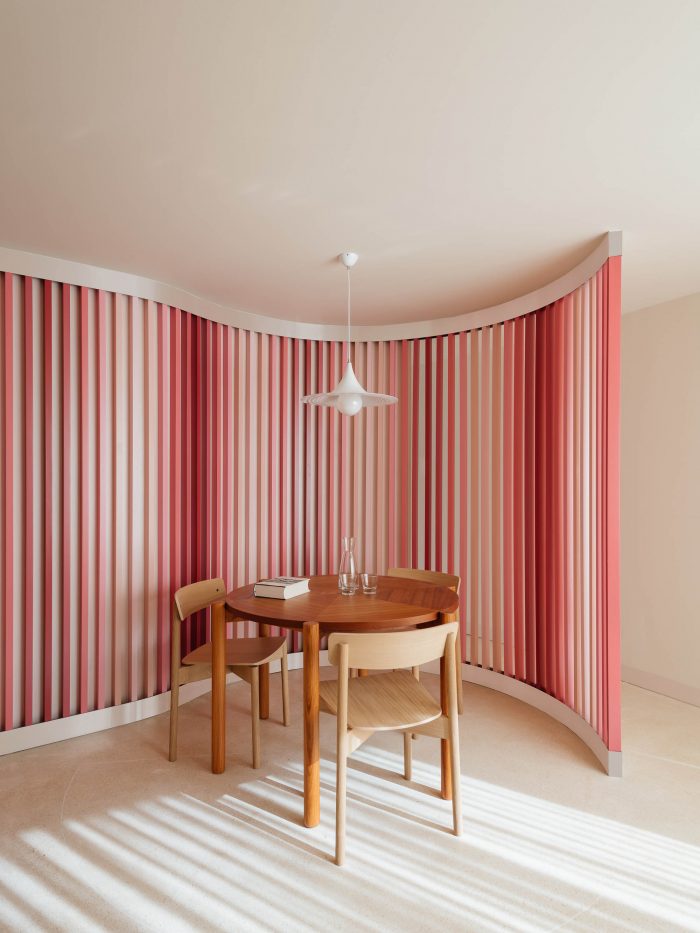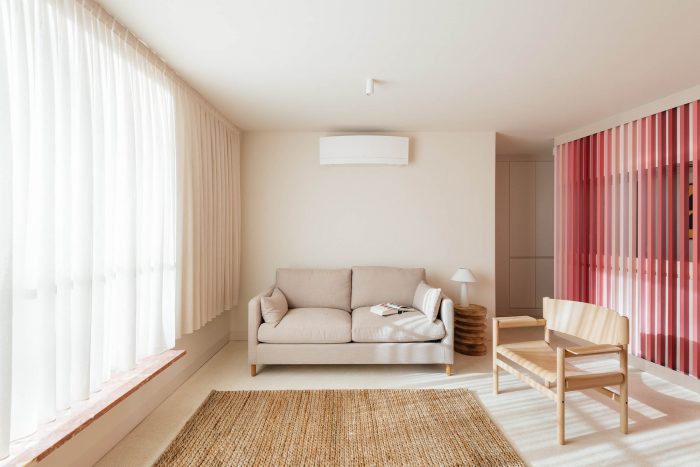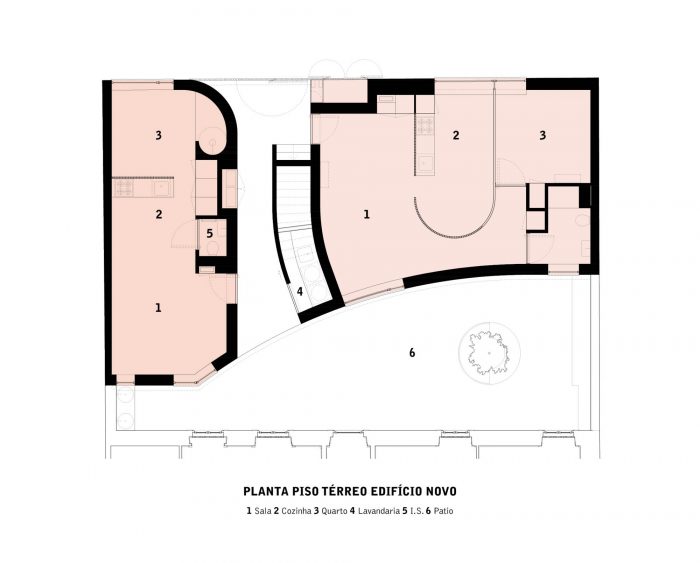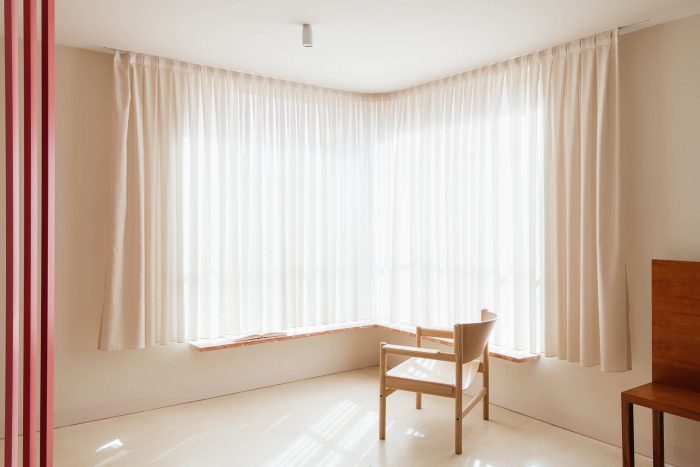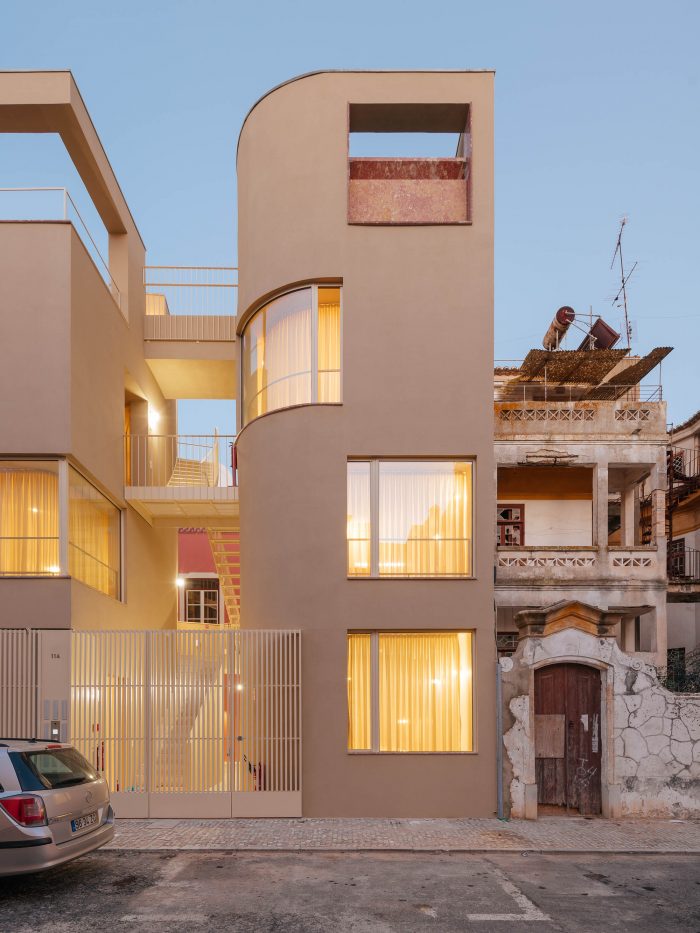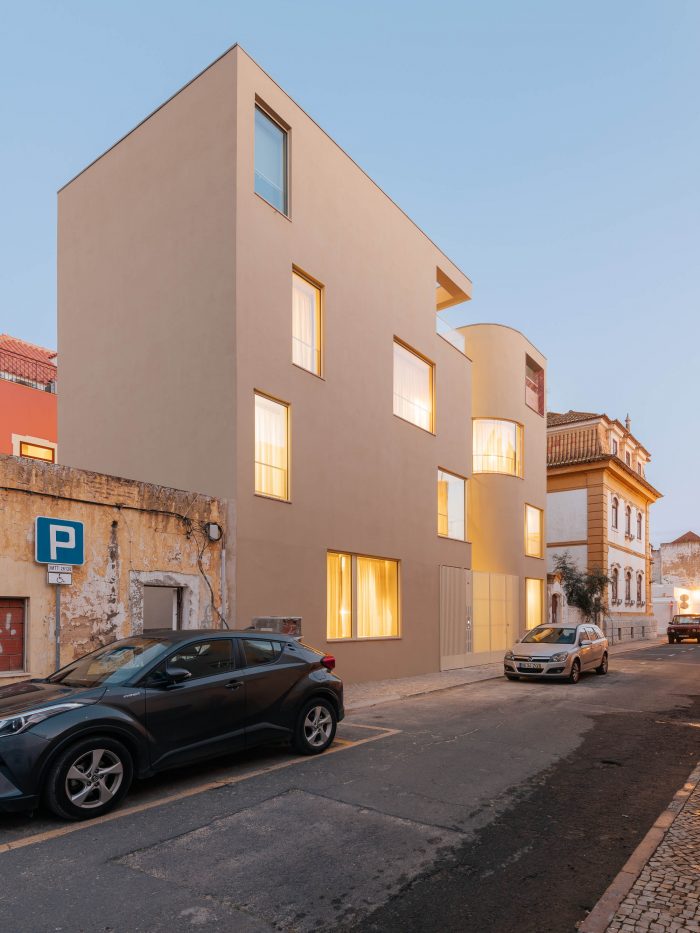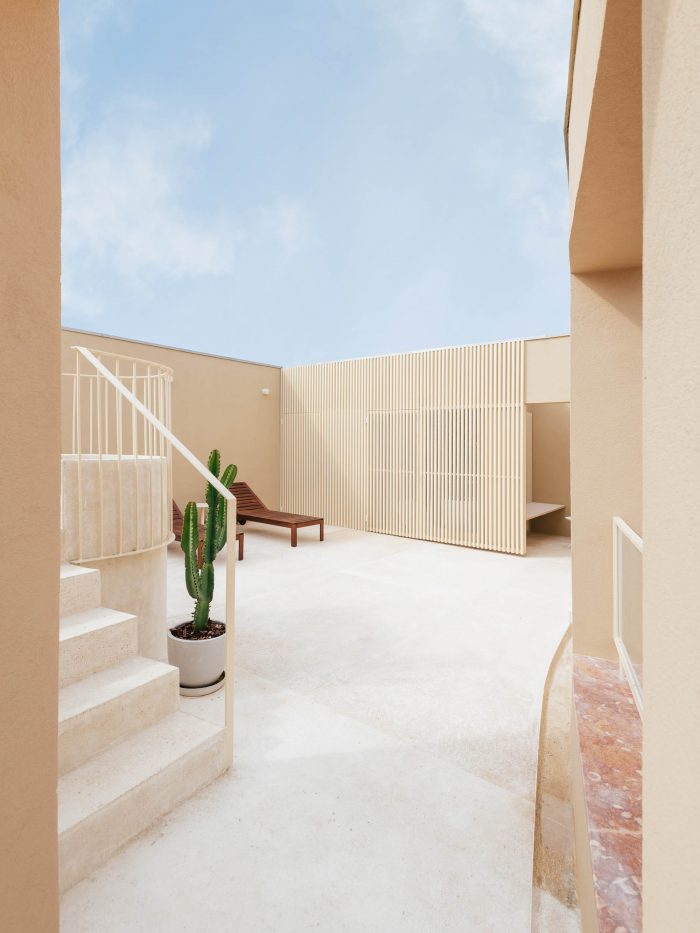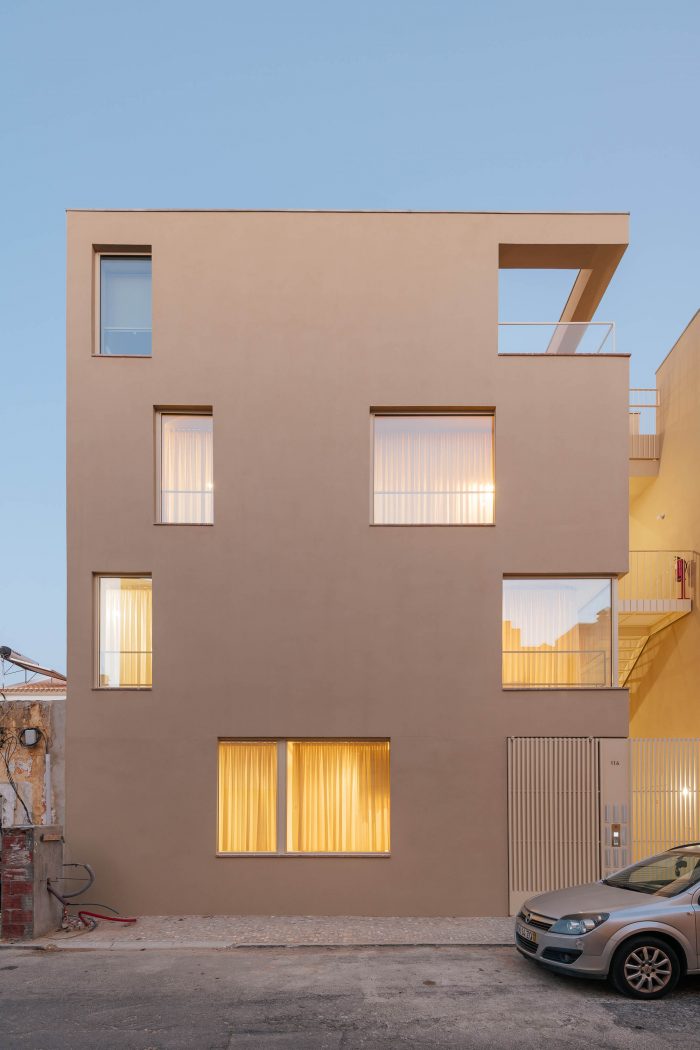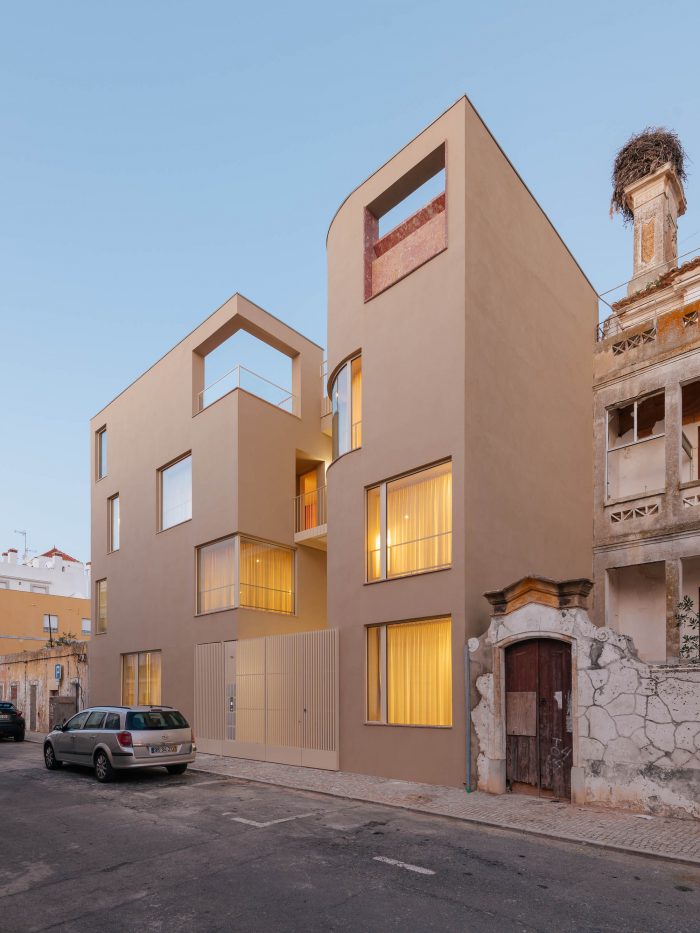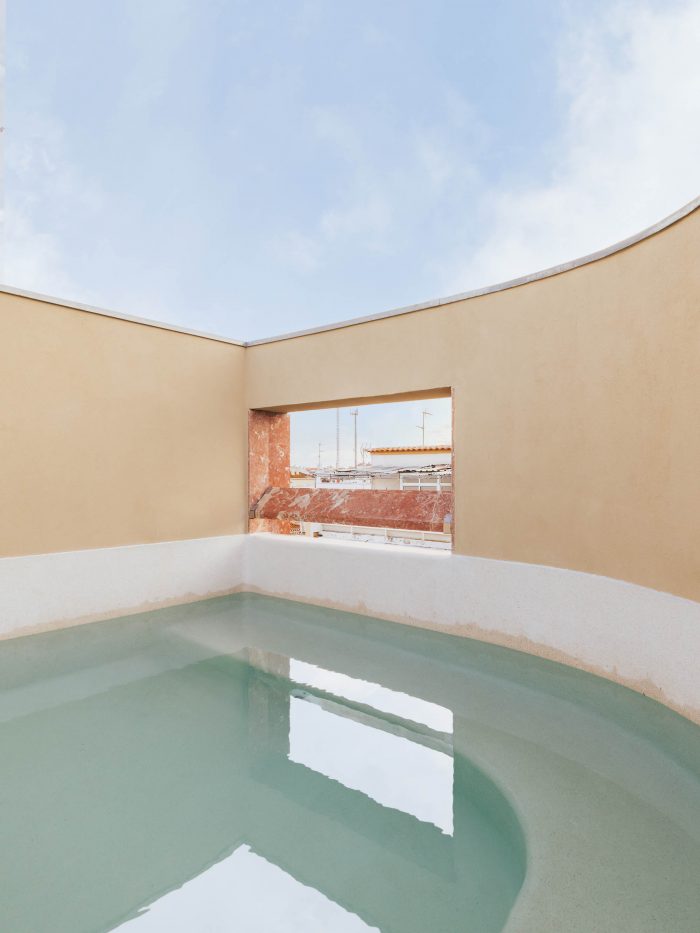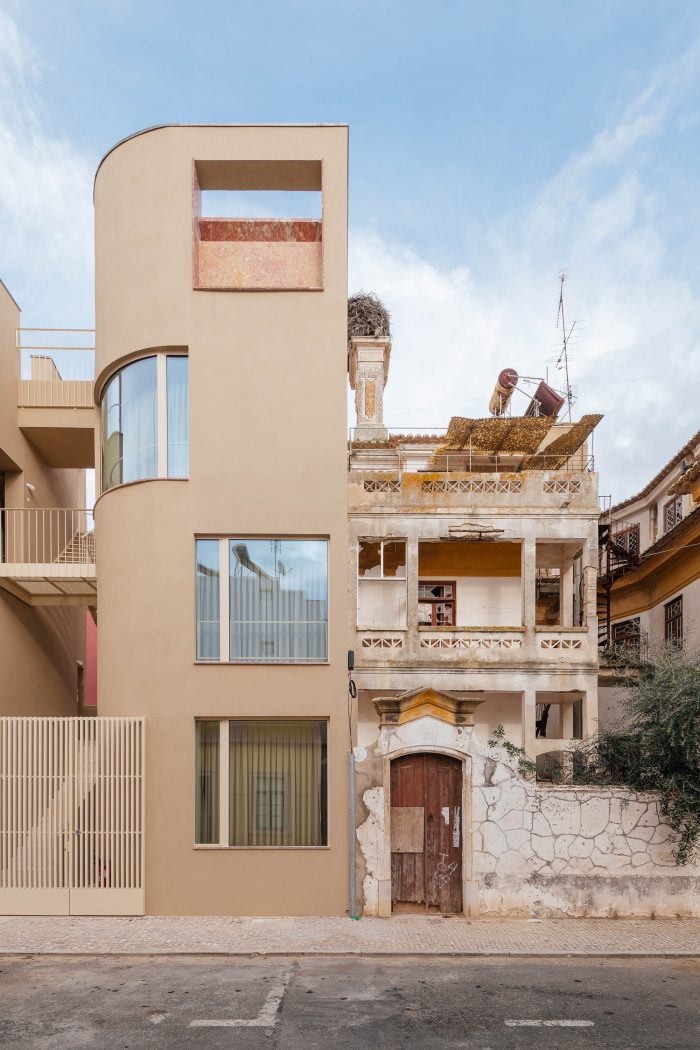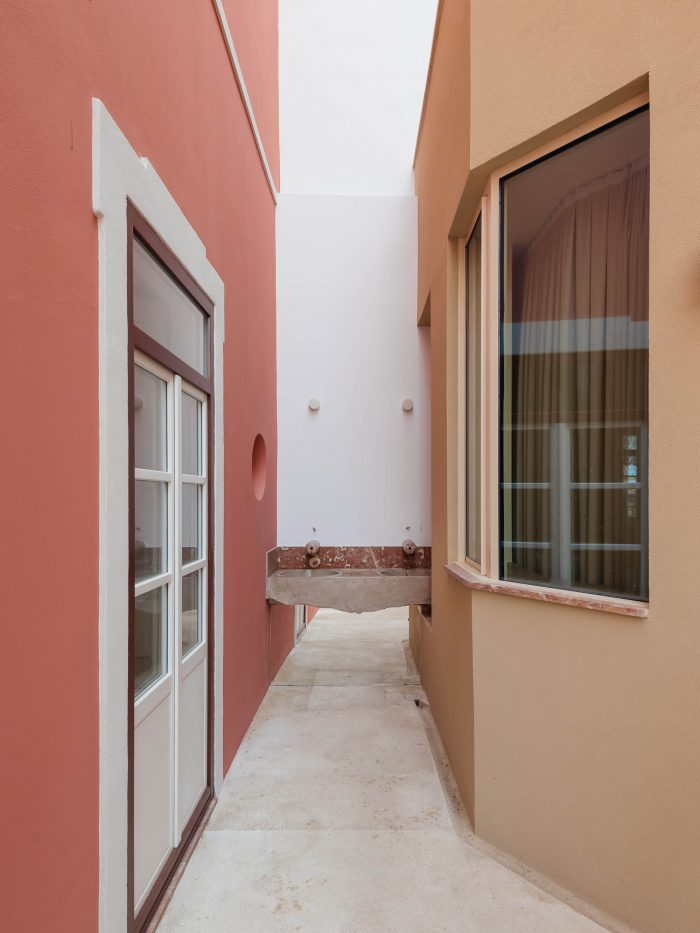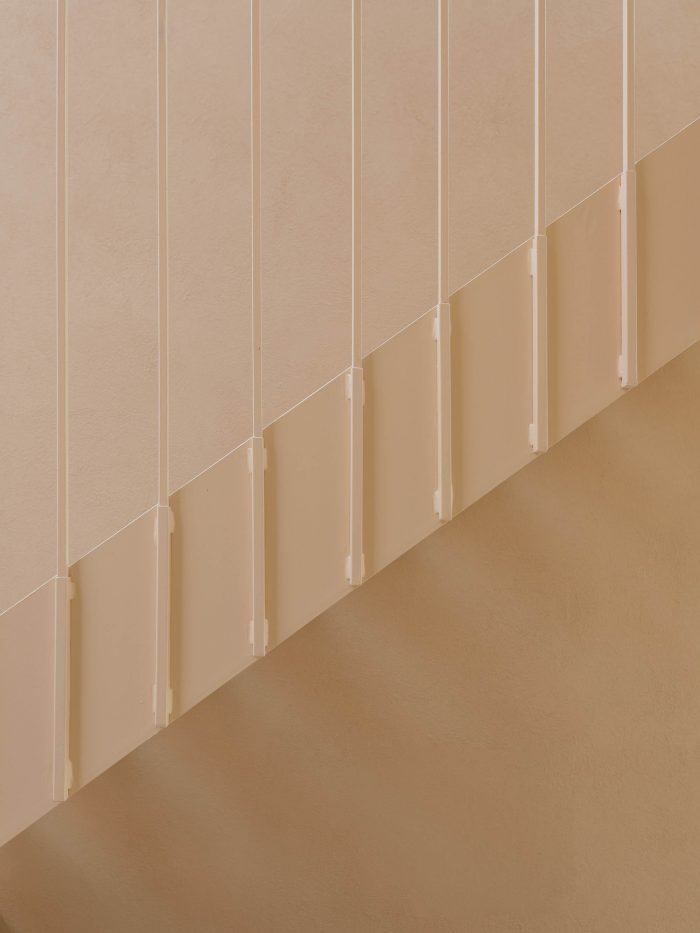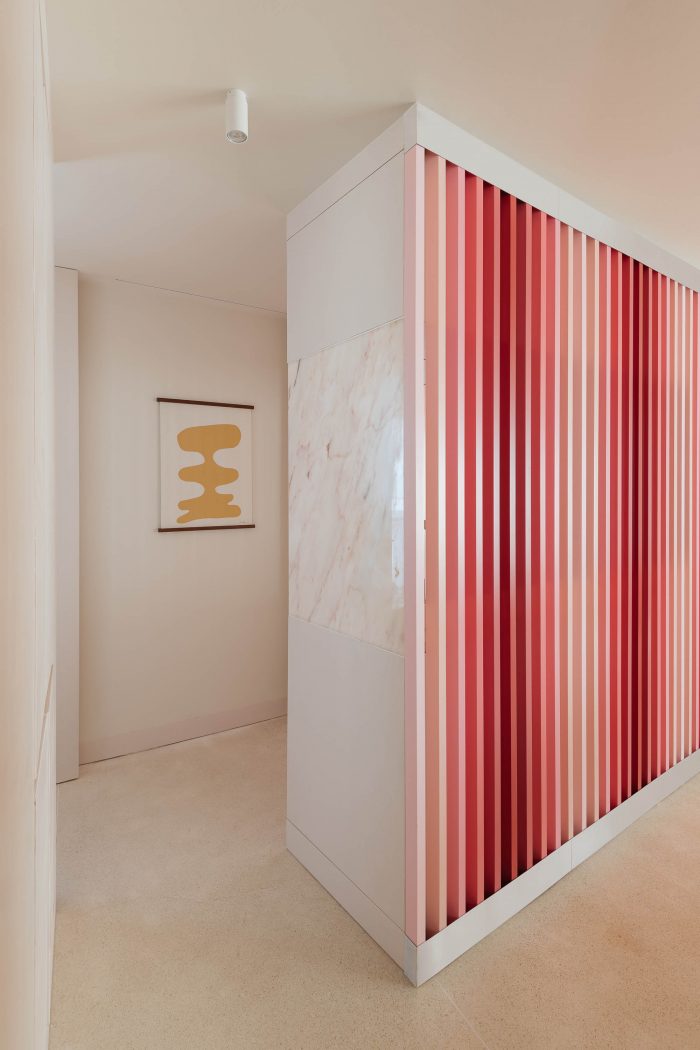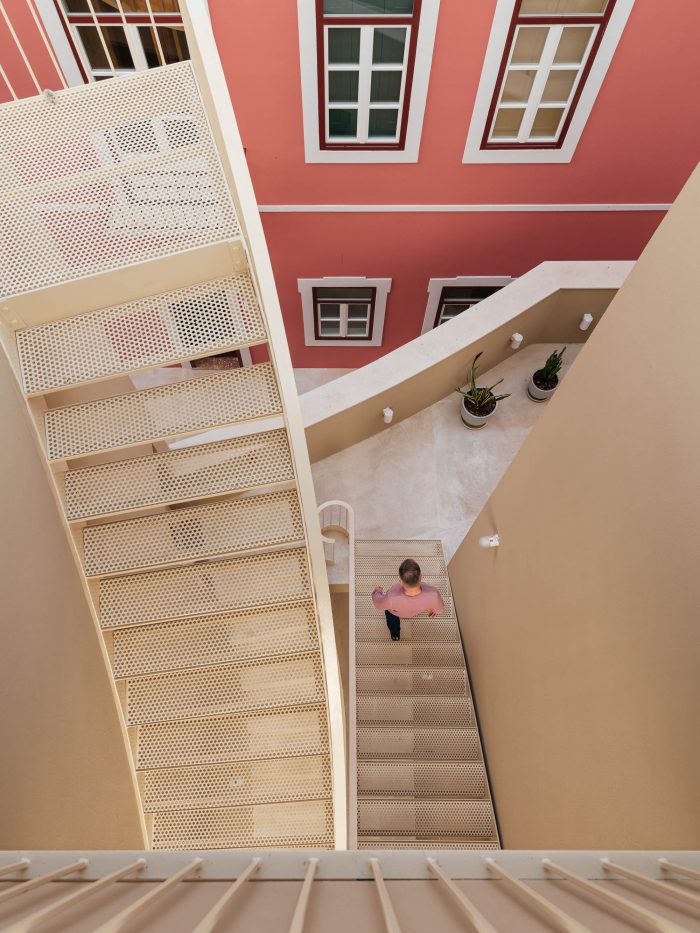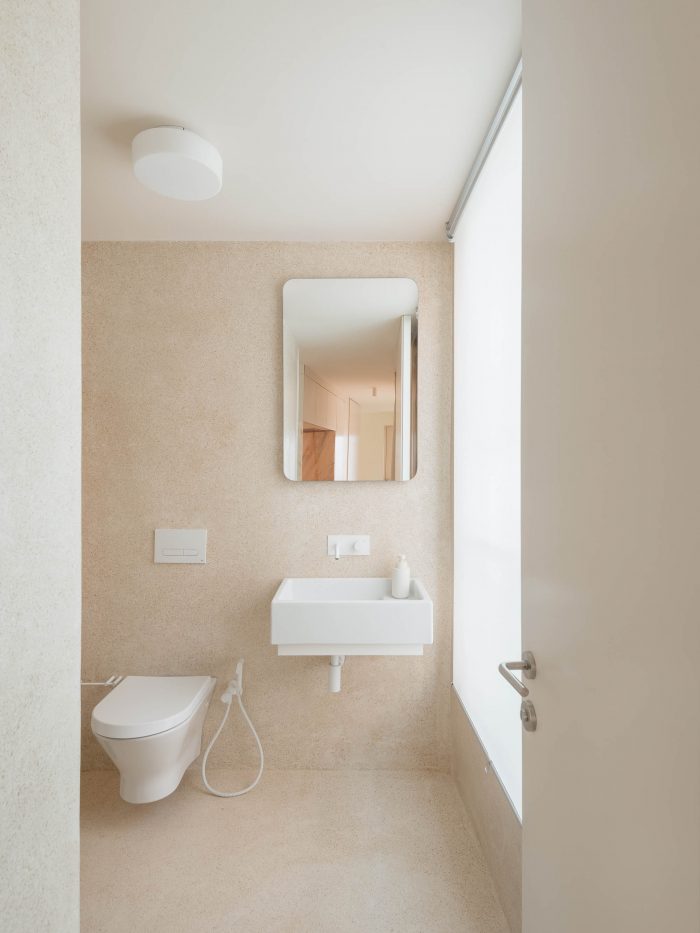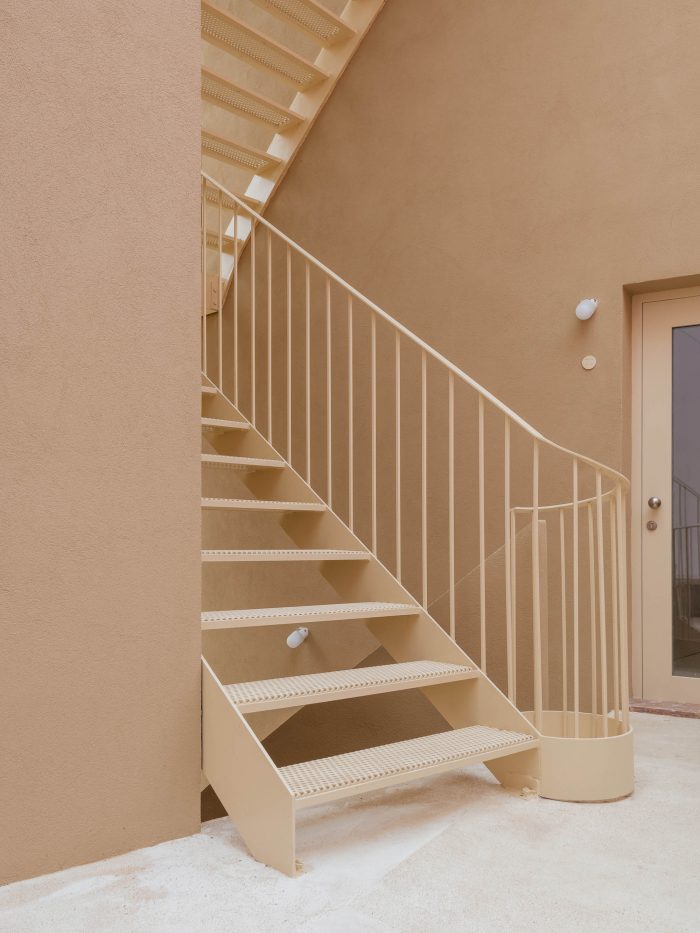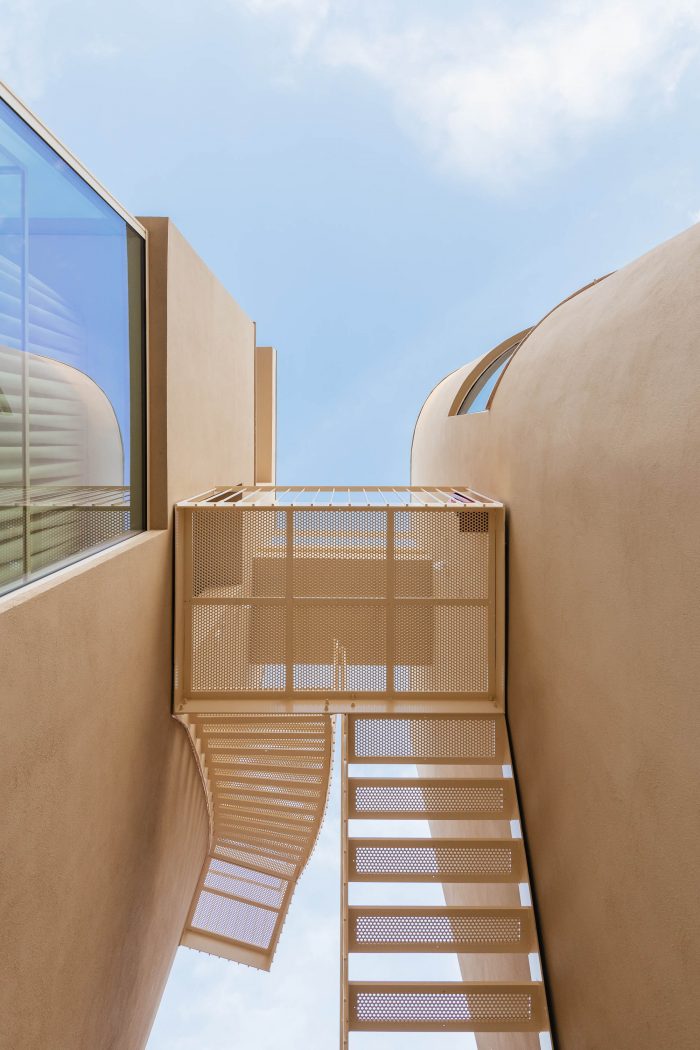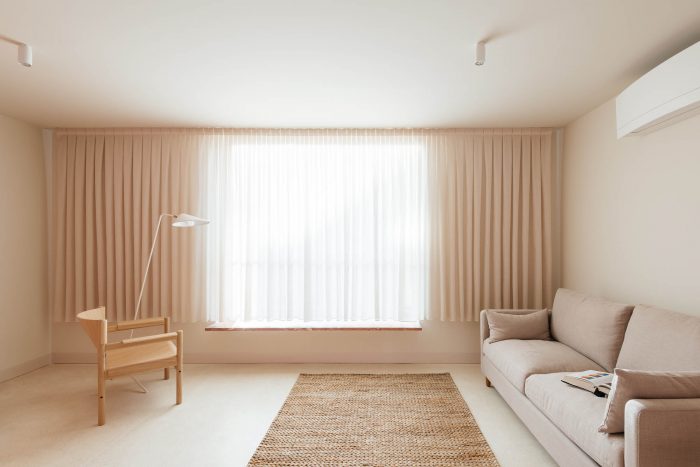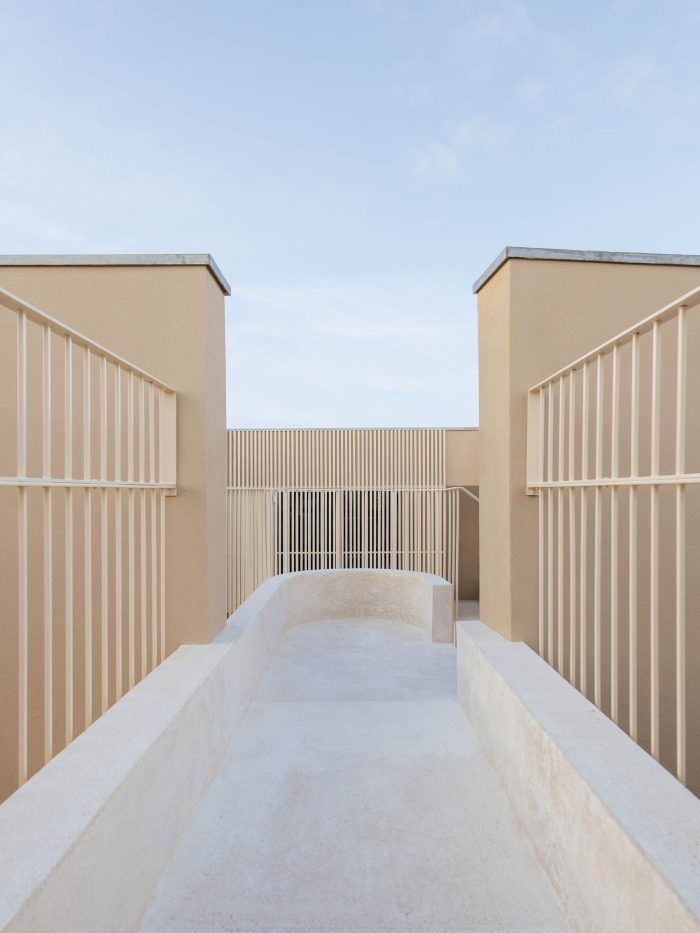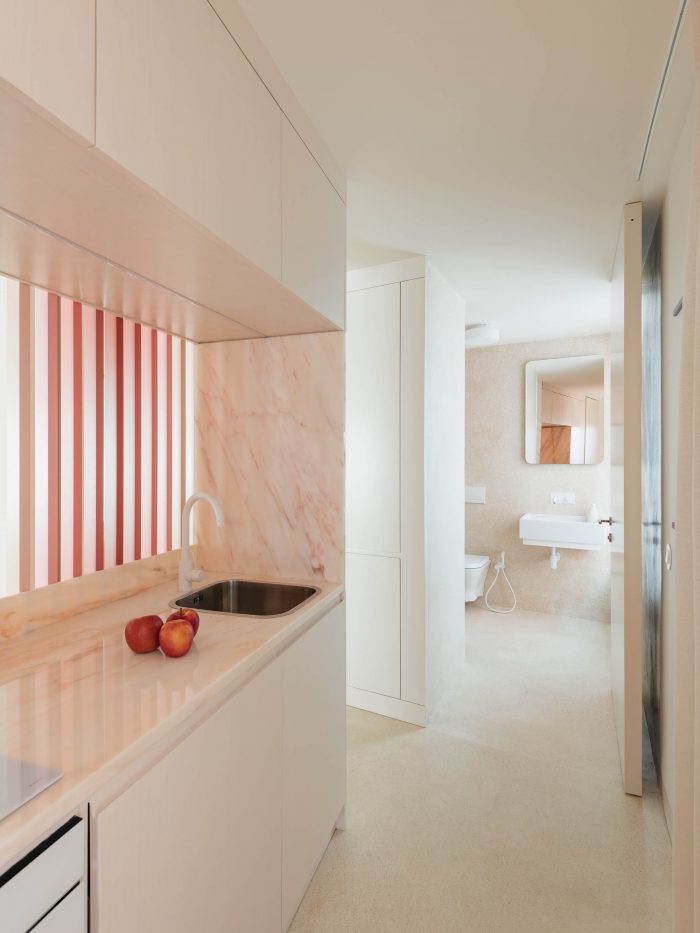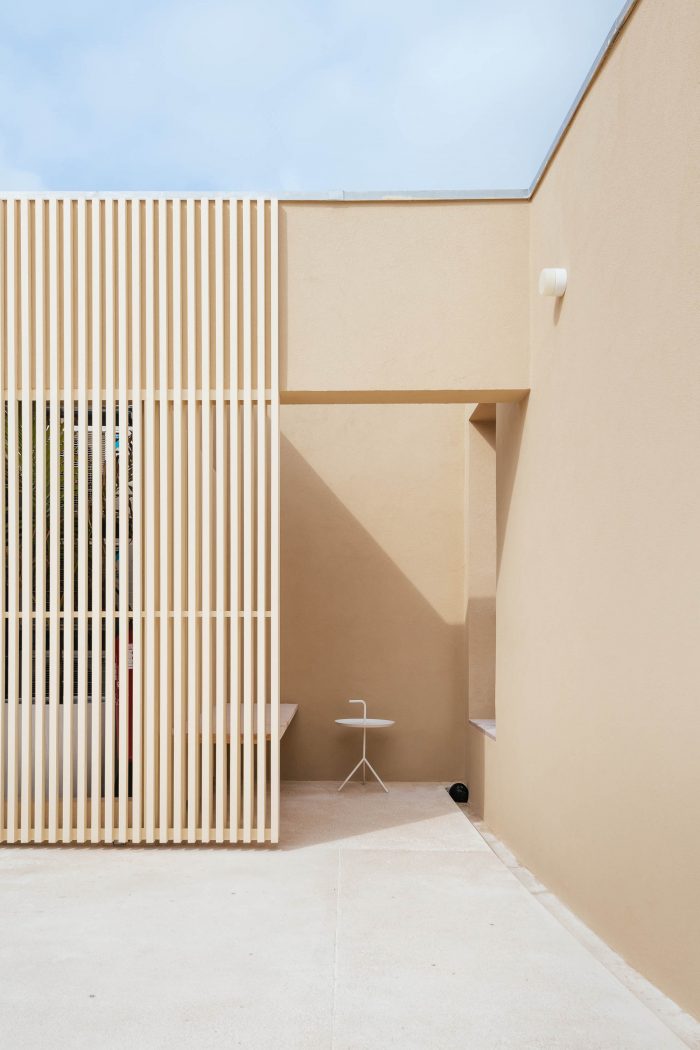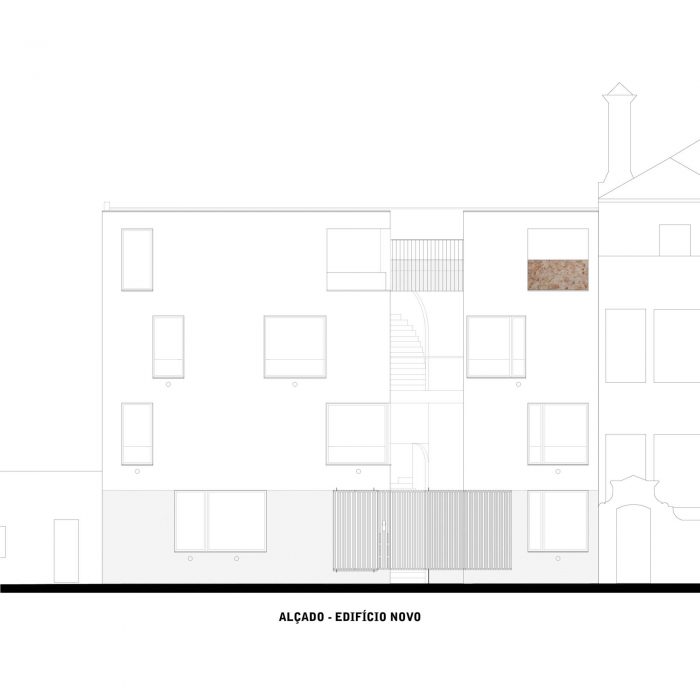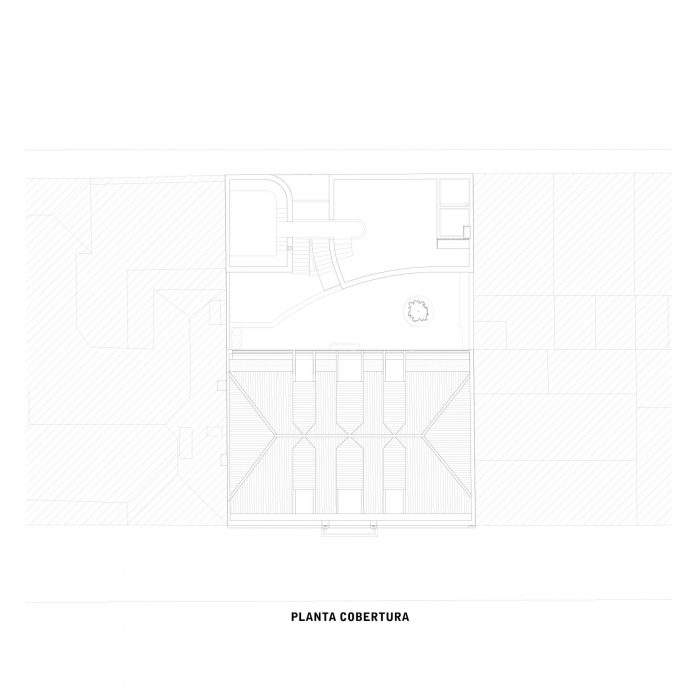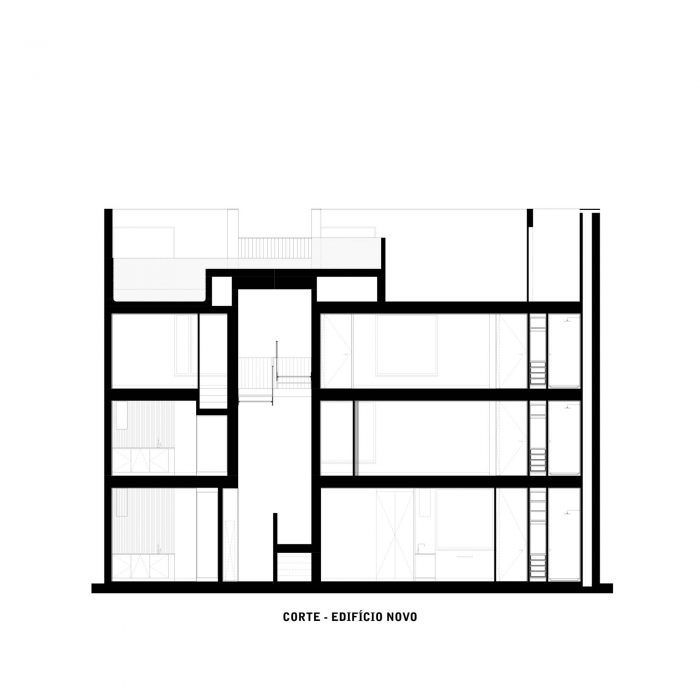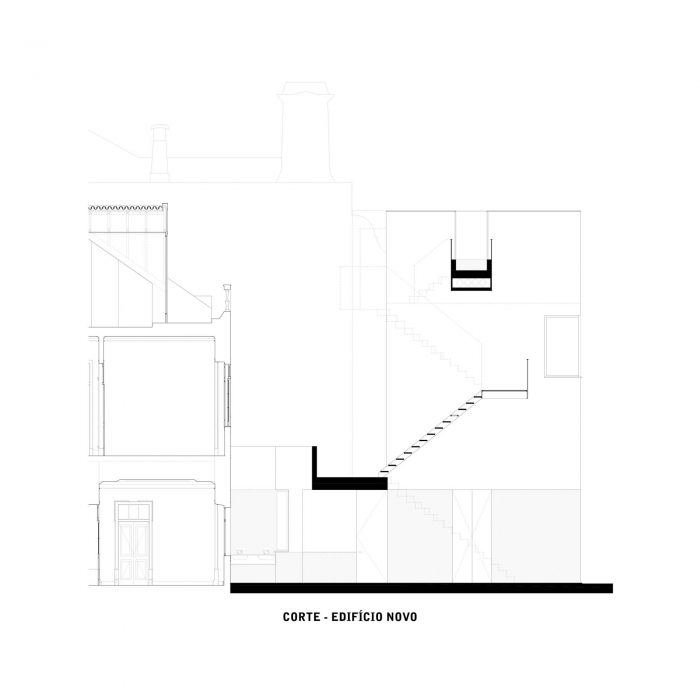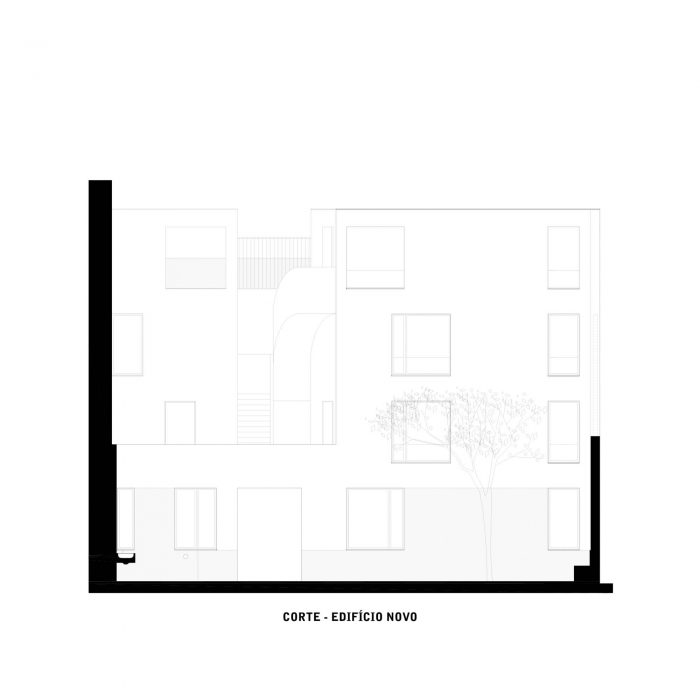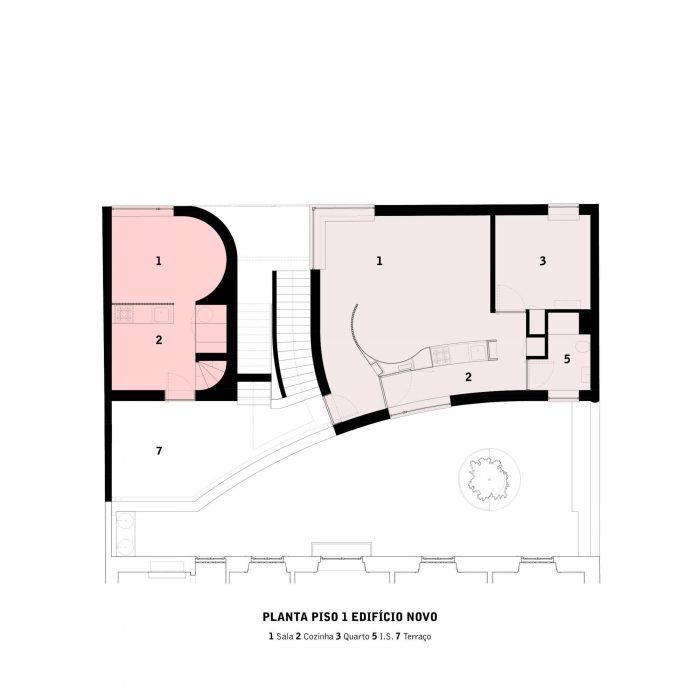玫瑰屋的第二章是从城市法规开始的。这些规则允许我们在面向Princesa街的地块背面对现有的建筑进行新的扩建。
The second chapter of the rose-house begins with the city code. The rules allow us to construct a new addition to the existent building on the back of the plot facing Princesa Street.
作为Vila Real de Santo Antonio城市中心的遗产保护,我们有严格的规则需要遵守。(1)所有的新建筑都必须有12米的高度;(2)为了明确区分旧建筑和新增加的建筑,设计的立面不应类似于庞巴里诺风格–长方形的法式窗户组织在一个正交的网格中。
Being Vila Real de Santo Antonio city center heritage protected, we had strict rules to follow: (1) all new buildings are obliged to have exactly 12m height; (2) to have a clear distinction between old buildings and new additions, the design façade should not be similar to Pombalino style – rectangular french windows organized in an orthogonal grid.
我们接受了法规提出的挑战,我们创造了一个四层楼的建筑,将其一分为二,使中央天井的光线更加充足。为了改善社会交往的机会和住宅区的公共设施,我们决定在最后一层设置一个小型游泳池和一个日光浴的露台。
We took the challenge set by the regulations and we created a four-floor building divided in two to allow more light in the central patio. To improve the opportunities for social interaction and the common amenities of the residential complex, it was decided to use the last floor to locate a small swimming pool and a terrace for sunbathing.
对于外墙,我们设计了一组单层的推拉窗,不需要对齐。窗户的尺寸和消失在墙内的能力可以将起居室几乎变成室外的露台,充分利用这个地区的天气。
For the facade, we designed a set of one pane sliding windows out of alignment. The dimension of the windows and the ability to disappear inside the walls can transform the living rooms almost into outdoor terraces making the most of the weather of this region.
对于内部装修,我们的选择是探索与现有建筑的异国情调相反的方式,设计出所有单位都类似的木质和奶油色水磨石的平静室内。在这种轻松的氛围中,我们加入了一个大胆的元素–用粉红色的渐变色涂抹的木制开放式隔断,组织了公寓的社交空间,并与这个故事的开头建立了色彩上的联系:玫瑰色的建筑,现在是芥末色的。
For the interior, our option was to explore the opposite of the exotism of the existent building and design calm interiors similar in all the flats with wood and cream terrazzo. To this relaxing atmosphere, we added a bold element – an open partition of wood painted in a gradient of pink that organizes the social space of the flats and makes the chromatic connection with the beginning of this story: the rose building, that now is mustard-rose.
Architects: Aurora Arquitectos, Furo
Area: 325 m²
Year: 2021
Photographs: do mal o menos
Construction: Cervimat, Francisco Rodrigues
Design Team:Sérgio Antunes, Sofia Reis Couto, Tânia Sousa, Carolina Rocha, Rui Baltazar, Ivo Lapa, Dora Jerbic, Anna Cavenago, Afonso Nunes, Kasia Cichecka + António Louro, José Castro Caldas, Paula Vargas
Inspection:Iperplano
City:Vila Real de Santo António
Country:Portugal

